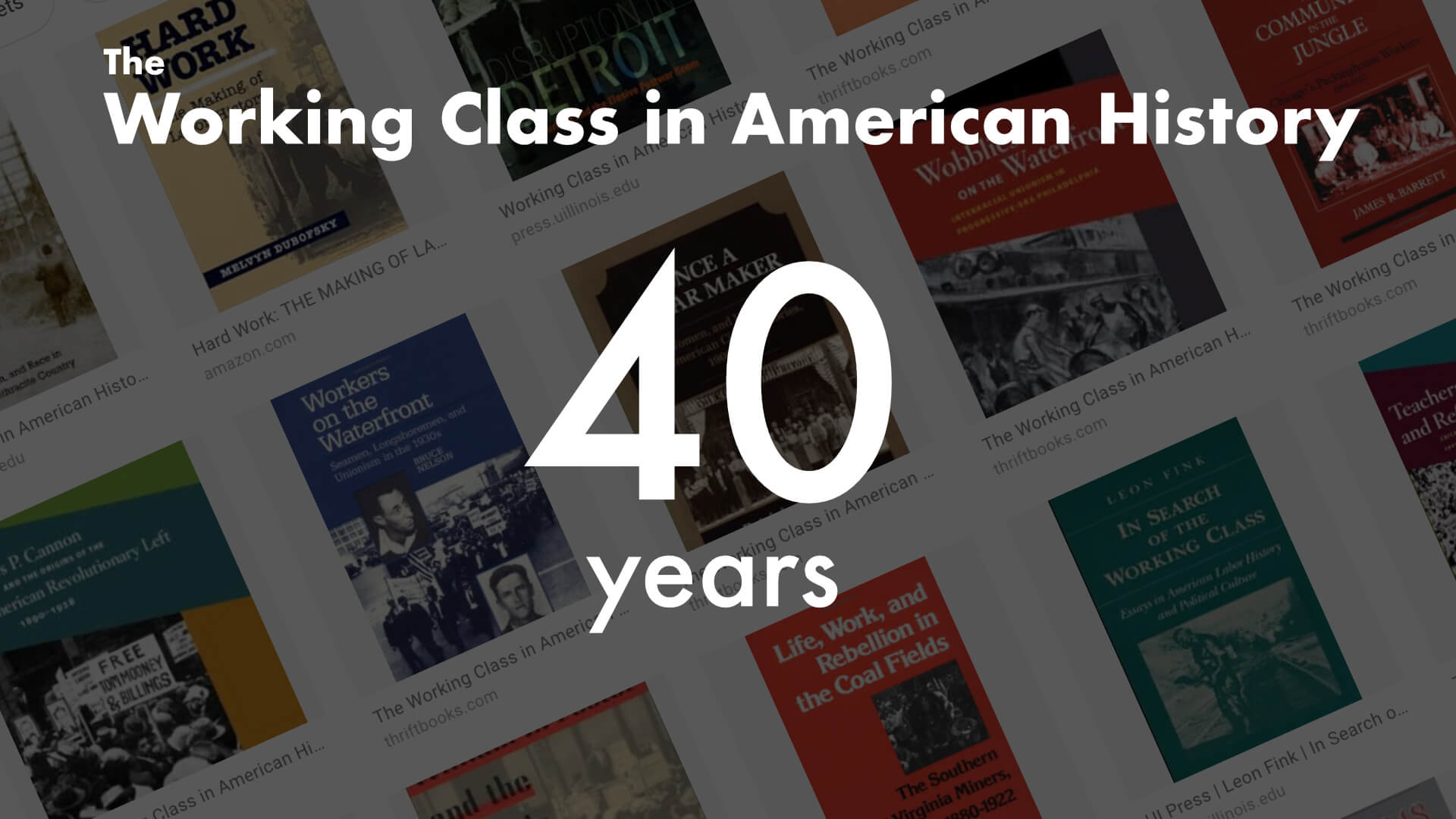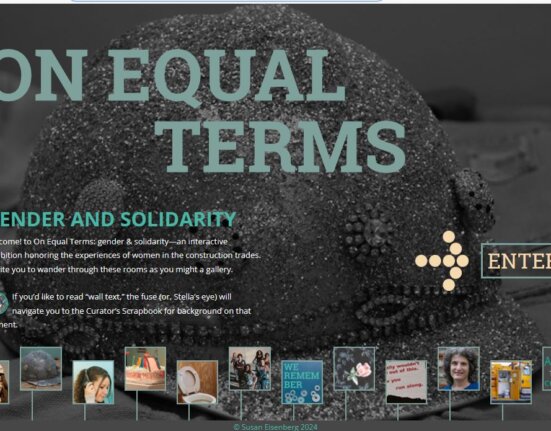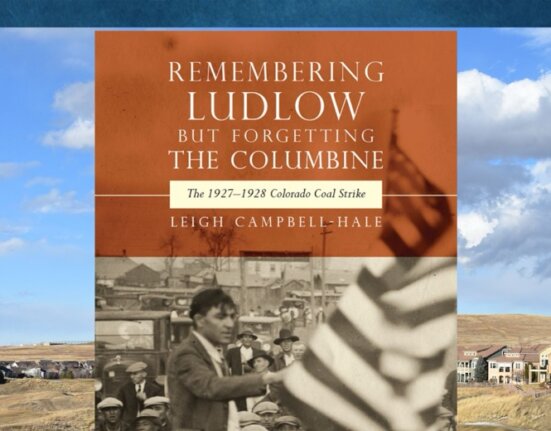In the next two weeks, we’ll be publishing a series of commentaries about the important contributions and critical reviews of the remarkable Working Class in American History Series, which is celebrating its 40th year in 2018. The series began when labor history as a field was making inroads into the dominant narratives of U.S. history. Since that time over 130 books in labor history have been published. In November, at a special session at the Newberry Library in Chicago, panelists surveyed and made comments about their perspectives on the accomplishments and limits of the series. We publish these commentaries in this series, and welcome your response to them. Panelists will include series editors Julie Greene, Jim Barrett, and Nelson Lichtenstein, and series authors Jessica Wilkerson, Toby Higbie, and Joe William Trotter, Jr.
In my hand are two books from the Working Class in American History series. One is the first in the series: Daniel Walkowitz’s Worker City, Company Town: Iron and Cotton-Worker Protest in Troy and Cohoes, New York, 1855-84 published in 1978. The second books is the very latest, number 132 as I count, published in mid 2018. It is Paul Shackel’s Remembering Lattimer: Labor, Migration, and Race in Pennsylvania Anthracite Country.
The remarkable thing about these two books, published 40 years apart, is that both are community studies, one by a pioneering labor historian, the other by an anthropologist interested not only in the dynamics of late 19th century class conflict, but also how such violent events – 19 were killed when police fired upon a protest march – are remembered and memorialized a century and more later.
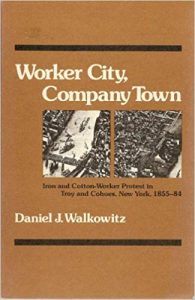
Daniel Walkowitz’s book was and is a classic community study, based on a dissertation written under the direction of Herbert Gutman, whose many essays invented or reinvented – from Progressive era models – the social history of a working class rooted in a particular town, region, or localized industry. Walkowitz wrote it at the University of Rochester, so materials were at hand for a study of nearby Troy and Cohoes, another hallmark of the community study. At a 1984 conference on the “new labor history” held at Northern Illinois University, I remember well the humor and bite with which participants attacked or defended the Gutmanite focus on community studies. “I got my one-way bus ticket from Herb” said Roy Rosenzweig, “and ended up spending two years in Worcester, Mass.
Location and its particularities were crucial to Walkowitz, as it was to Gutman and Charles Tilly, also an early influence. Walkowitz sought to “illustrate how local traditions and circumstances can affect particular patterns of protest.” The creation of a community through ethnic associations, religious institutions, political parties, helped create or in some instances retard the social and ideological solidarity that stood at the heart of worker protest and organization. For immigrant workers, first came adaptation to the new environment, then social organization and protest. Unlike the sociologists and industrial relations scholars of the preceding generation, Walkowitz was not a Whiggish proponent of the rise of an inevitable class consciousness. Troy did become a “worker city” because of its multi-ethnic, multi-industry composition, but Cohoes remained a “company town” because of the particular social and economic characteristics of that cross-river community. To begin to understand working-class behavior, wrote Walkowitz, “historians must be city-specific, industry-specific, and skill-specific.” Localism, he writes, was more important that nationalism in upstate New York. Despite the growth of continent-wide corporations and industries “a narrowly privatized and local vision also persisted within large segments of the working class.”
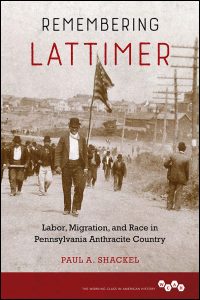
One can find many of these themes and tropes still vibrant and insightful 40 years later in the book published by Paul Shackel on another small industrial town full of recent immigrants, native American capitalists, and an economy characterized by unpredictable ups and downs.
Indeed, books of this sort have populated the Working Class in American History publication list.
Of the first 50 books published by Illinois, 25 were, by my calculation and judgement, community studies that focused on a particular group of workers in a limited geographical area, usually employed by one company or in one industry. And of those 25 books, fully 20 focused on the experience of a worker community largely in the years before 1914.
But the influence and prevalence of the community study has waned. Of the last 50 books published in the Illinois series just 12 were community studies, of which only four studied the experience of workers and their adversaries during the long 19th century.
What else did the Illinois series publish besides community studies? Biographies of labor leaders and radicals were present with some frequency in the early years of the series, as were histories of unionism and class conflict in an entire industry. More recently, studies of labor ideology, religion, and gender have taken a more prominent place on the list. And 20 percent of the last 50 books published have been studies of labor immigration, migration and Latino ethnicity, books that compare labor regimes on an international basis.
Of course, we have to make a distinction between the books that get published in the Illinois series and in other extant series and what we think of as “the field.” While the list has obviously evolved, I am struck that so many of the books published in the second decade of the 21st century could also have been published in the 1970s when the series got started. Does this constitute a criticism? Well, no and yes. Labor history does encompass a certain set of subjects and narratives, so we have community studies and strike narratives researched and published today just as we did 40 years ago. The emphasis and nuance of such studies may shift to incorporate new ideas and subjects, but labor history does have a core. It is not a field that is morphing into something entirely different. That happened to labor economics, I think, and to industrial relations, which has practically disappeared. American Studies in the 21st Century is virtually an entirely different field asking entirely different questions, then when that subdiscipline began in the 1950s. Meanwhile labor history is still about class and class conflict and the intersection of both with ethnicity and gender, with production and reproduction, with technology and capital, with the law and the administrative state. In some instances, the study of labor history takes place in a well-defined locale, in others it is utterly transnational.
In an unpublished manuscript on the cultural apparatus, a matrix that includes both Hollywood and Madison Avenue, publishing and the academy, the sociologist C. Wright Mills framed the work being done therein as the product of many “hacks” and a few “stars.” This was a provocative formulation, especially in an era – the mid 1950s – when an outpouring of B movies and advertising jiggles was taken as an index of the commercial and moral debasement of American culture. But Mills was out to celebrate the “hacks,” or to put it in more favorable nomenclature, the journeymen and women whose craftsman-like efforts legitimized, enhanced, and over time transformed a set of intellectual and cultural norms and structures. The “stars” were indeed innovators, but without the “hacks” their flash would soon extinguish itself in isolation. Mills thus transformed the meaning of the word “hack” so as to give it functional standing and moral stature. So, to apply this Millsian frame to the Illinois series, I think we can see that many books do not necessarily make an historiographical breakthrough, but they do validate the premises that stand at the core of labor history and the raison d’etre of the series, even as the subject matter and methodology of labor history has in fact shifted, but slowly, over the years. This is the glory and the despair of a longstanding series.
As a kind of coda here I do want set out, with almost twitter brevity, where I do think labor history has to move. There have been a few dead ends, among them the Frankfurt School project that sought to explain working-class deradicalization as a consequence of consumer abundance and capitalist stability, the deskilling and proletarianization frame once popularized by the work of Harry Braverman and a mid 20th century generation of industrial sociologists, and most recently, whiteness studies, which verged on a racial essentialism when it came to explaining the continuing power of race and its corrosive impact on various forms of solidarity.
Of course, my own view, when surveying the Illinois series as well as other labor histories, is that any study of the condition of labor, past and present, is impossible without a simultaneous and equally sophisticated study of capital in all its many forms and flavors, foreign and domestic, fixed and mobile. The mobility of capital, well-recognized in this century, but present in every decade of the past, can easily subvert the solidarities that so many labor historians sought to identify in their community studies. And as Julie Greene, Leon Fink, Cindy Hahamovitch, Sven Beckert, and my colleague, Erika Rappaport, have demonstrated in such graphic fashion, the migrations of labor, often under conditions of unfreedom and virtual enslavement, cannot be divorced from the increasingly complex deployment of capital on a global scale. Of course, this is not merely a 21st century phenomenon, but was in robust operation for many centuries past. Indeed, as I have argued elsewhere, I think the particular brand of merchant capitalism, exemplified by Walmart, Apple, and Amazon and their sweated supply chains, has had an echo 200 and more years before when the merchants and bankers of London, Liverpool, Amsterdam, Boston, and New York proved so instrumental to the expansion and defense of a worldwide system of slave labor and commodity production.
We have to explore more of these dialectical connections.


